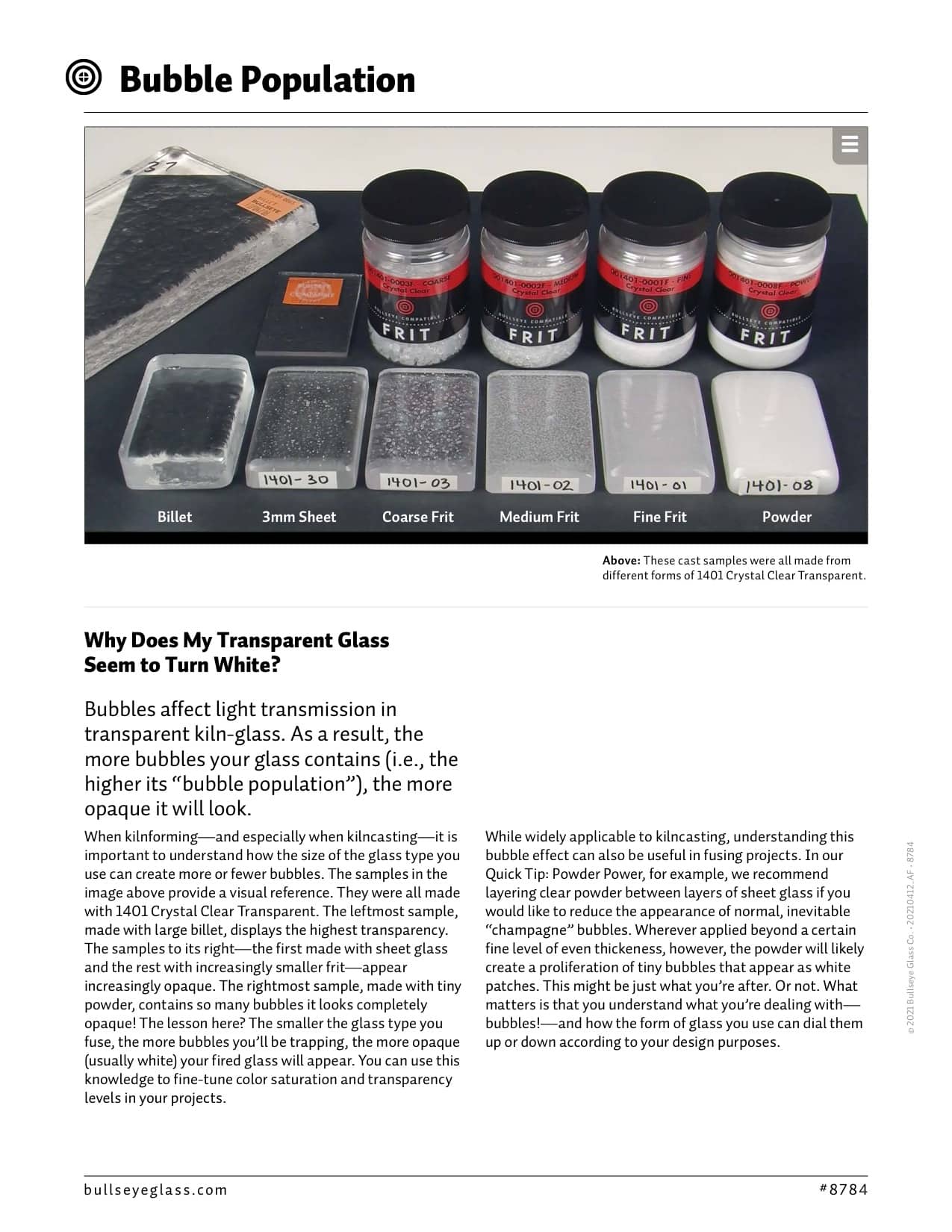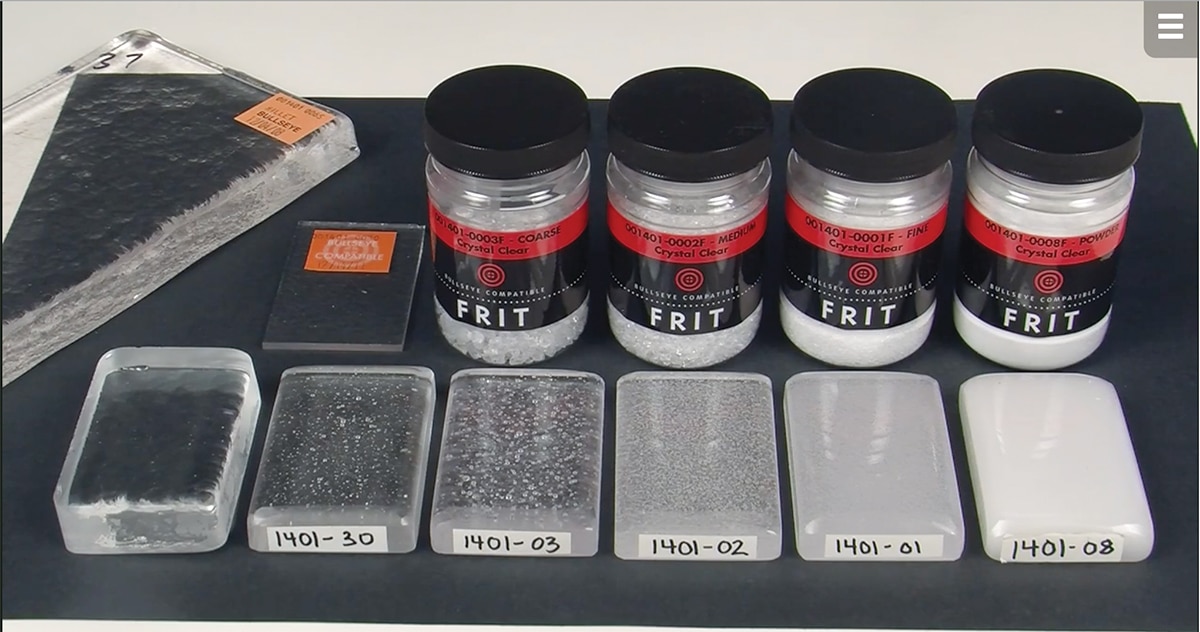Why does my transparent glass seem to turn white?
Bubbles affect light transmission in transparent kiln-glass. As a result, the more bubbles your glass contains (i.e., the higher its “bubble population”), the more opaque it will look.
When kilnforming—and especially when kilncasting—it is important to understand how the size of the glass type you use can create more or fewer bubbles. The samples in the image above provide a visual reference. They were all made with 001401 Crystal Clear. The leftmost sample, made with large billet, displays the highest transparency. The samples to its right—the first made with sheet glass and the rest with increasingly smaller frit—appear increasingly opaque. The rightmost sample, made with tiny powder, contains so many bubbles it looks completely opaque! The lesson here? The smaller the glass type you fuse, the more bubbles you’ll be trapping, the more opaque (usually white) your fired glass will appear. You can use this knowledge to fine-tune color saturation and transparency levels in your projects.
While widely applicable to kilncasting, understanding this bubble effect can also be useful in fusing projects. In our Quick Tip: Powder Power, for example, we recommend layering clear powder between layers of sheet glass if you would like to reduce the appearance of normal, inevitable “champagne” bubbles. Wherever applied beyond a certain fine level of even thickeness, however, the powder will likely
create a proliferation of tiny bubbles that appear as white patches. This might be just what you’re after. Or not. What matters is that you understand what you’re dealing with—bubbles!—and how the form of glass you use can dial them up or down according to your design purposes.


